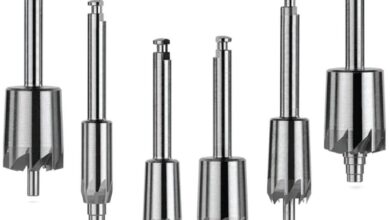The Rapid Growth of the Endoscopy Devices Market
The endoscopy device market has grown and evolved significantly, owing to technical improvements, increased demand for minimally invasive surgeries, and the rising prevalence of chronic diseases. Endoscopy is a medical treatment that allows doctors to inspect the inside of a patient’s body using an endoscope, which is a flexible tube equipped with a light and camera. This minimally invasive procedure is critical for detecting and treating a variety of illnesses, particularly those affecting the gastrointestinal (GI) tract, respiratory system, and urogenital system. The endoscopy devices market includes a wide range of equipment, such as endoscopes, visualization systems, and accessories.
Market Drivers
Technological Advancements
One of the key drivers of the endoscopic equipment market is ongoing technical innovation in the industry. Advances in imaging technology, such as high-definition (HD) and 4K resolution, have substantially increased the clarity and detail of endoscopic pictures. Furthermore, the invention of capsule endoscopy, which requires swallowing a small, pill-sized camera, has transformed the diagnosis of gastrointestinal problems by providing a non-invasive alternative to conventional procedures.
Growing Demand for Minimally Invasive Surgeries
Minimally invasive procedures (MIS) are becoming increasingly popular over traditional open surgeries due to their multiple advantages, including reduced discomfort, shorter hospital stays, faster recovery times, and a lower chance of complications. Endoscopy is important in MIS because it allows surgeons to conduct difficult procedures with precision and minimal patient trauma. The transition to MIS has increased the demand for sophisticated endoscopic instruments.
Rising Prevalence of Chronic Diseases
The global rise of chronic diseases such as colorectal cancer, gastrointestinal ailments, and respiratory diseases has increased the demand for endoscopic procedures. Early detection and diagnosis are crucial for successful treatment, and endoscopy is a dependable and efficient way to identify these disorders. As a result, the increasing prevalence of such disorders has fueled the expansion of the endoscopic devices market.
Types of Endoscopy Devices
The endoscopy devices market includes various types of equipment, each designed for specific diagnostic and therapeutic purposes. The primary categories are:
Endoscopes
Flexible Endoscopes: Used for examining the GI tract, respiratory system, and urinary tract. They are bendable and can navigate through the body’s passages.
Rigid Endoscopes: Employed in procedures requiring a straight view, such as arthroscopy, laparoscopy, and cystoscopy. They offer high image quality and stability.
Visualization Systems
Cameras and Video Processors: Capture and process images from the endoscope, displaying them on monitors for real-time viewing.
Monitors and Display Systems: High-definition screens that provide clear and detailed images to assist surgeons during procedures.
Accessories
Insufflators: Devices that deliver gas, typically carbon dioxide, to inflate body cavities, improving visibility during procedures.
Suction and Irrigation Systems: Used to clear the operative field by removing fluids and debris.
Biopsy Forceps and Snares: Instruments for taking tissue samples and removing polyps or other growths.
Market Trends
The endoscopy devices market is expected to continue its growth trajectory, driven by several emerging trends:
Integration of Artificial Intelligence (AI)
AI is being used in endoscopic equipment more and more to improve patient outcomes and increase diagnostic accuracy. AI-driven technologies can help with picture analysis, anomaly detection, and surgical guidance. The field will undergo a revolution thanks to this technological integration, which will increase efficiency and precision.
Development of Disposable Endoscopes
Due to concerns about infection control and the need for affordable solutions, there is an increasing demand for disposable endoscopes. Because they remove the possibility of cross-contamination and require fewer complicated sterilization procedures, disposable endoscopes are a desirable choice for medical facilities.
Expansion of Capsule Endoscopy
The use of capsule endoscopy as a non-invasive GI problem diagnostic technique is growing in popularity. The market is anticipated to rise as more sophisticated capsules with better imaging capabilities and longer battery lives are developed. An easier-on-the-patient substitute for conventional endoscopic operations is provided by this technology.
Increasing Adoption of Robotic-Assisted Endoscopy
A new technique that combines the flexibility of endoscopic technology with the precision of robotics is called robotic-assisted endoscopy. Greater control and agility during surgeries are made possible by these devices, which improves patient outcomes and the surgeon’s abilities.
Conclusion
Due to the increasing prevalence of chronic diseases, the growing desire for minimally invasive operations, and technological improvements, the endoscopy devices market is expected to increase in the coming years. Major companies in the sector are concentrating on strategic projects and innovation to keep a competitive advantage. Future developments in the market are anticipated to include the introduction of artificial intelligence, the creation of disposable endoscopes, and the growth of capsule endoscopy. The market for endoscopic devices will be essential to enhancing patient outcomes, diagnostic precision, and overall healthcare efficiency as global healthcare systems continue to change.



